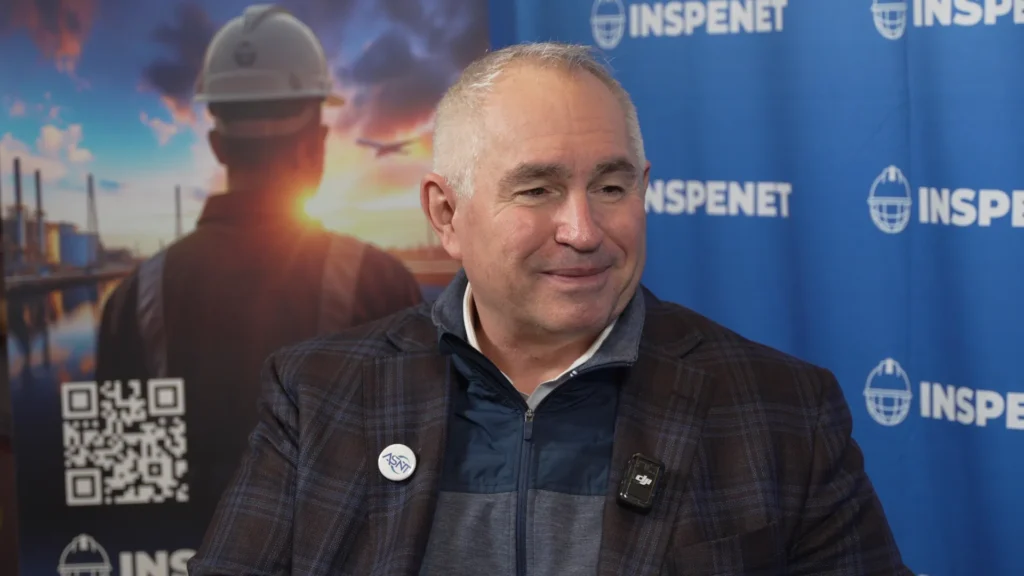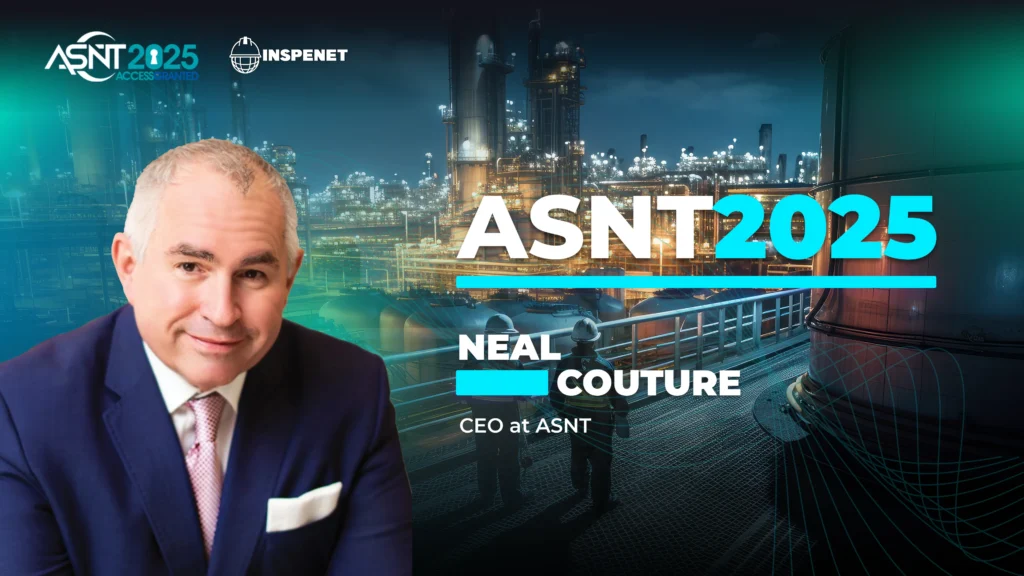The future of nondestructive testing with Neal Couture
Leading an organization with a presence in more than 90 countries is no easy task, but Neal Couture does it with a clarity that starts with people. The CEO of the American Society for Nondestructive Testing (ASNT) talked about the axes that will mark the direction of the organization over the next decade, highlighting the role of technological innovation and the training of technical talent as central pillars.
People-centered leadership
"The best aspect of my job is dealing with people," says Couture; his management style is based on building relationships, getting to know members of the technical community and helping them advance their professional needs. This approach has been instrumental in strengthening ASNT's global network, which relies heavily on collaboration among volunteers, partners and professionals in the nondestructive testing (NDT).
A strategic plan for the next decade
ASNT has defined a new strategic plan with two fundamental objectives for the next decade, the first being to strengthen the NDT workforce. In this regard, Couture explains that "the main problem we face is the lack of qualified people". To address this, the organization focuses on attracting new talent and training skilled technicians, accompanying them throughout their careers through initiatives ranging from awareness-raising activities in schools to the promotion of mentoring programs.
The second objective is the promotion and adoption of advanced technologies, as nondestructive testing is a highly technical field where artificial intelligence, virtual reality or remote sensors can make a crucial difference. This drive, however, faces the challenge of generally slow adoption, driven by reasons such as cost and resistance to change.
"It's up to us to facilitate that transition, validate the use of new tools and make sure people stay in the system."
Couture points out.
Technology and innovation as drivers of change
The digital transformation of the industry is not new to ASNT, as, says Couture, "we have been working with automation in various forms for over fifty years". What is redefining the landscape today is the ability of new technologies to
Alliances with industry, government and academia
Advancing nondestructive testing requires strong cross-industry collaboration. In this area, Couture stresses that both industry and governments widely recognize the importance of NDT for its direct impact on safety and operating costs, a relevance that has never needed to be demonstrated.
This collaboration extends vitally to the academic world, where many industry professionals, trained in careers such as engineering or materials science, come from. To connect academic work with daily practice, ASNT maintains links with universities through symposia, scientific publications and joint research programs.

Global expansion and virtual organizational model
ASNT's global network includes members in nearly one hundred countries, with its largest chapter in India, which exceeds two thousand members, followed by a significant presence in the Middle East. This international expansion has been made possible by the transition to a 100% virtual operating model implemented in the aftermath of the pandemic.
This shift in model, which moved the organization from a headquarters in Columbus, Ohio, to having employees spread across twenty states, has allowed it to attract talent from across the country without the traditional geographic limitations. This decentralization defines ASNT's new identity: an organization that is operational everywhere, without being anchored to a fixed location.
Awakening technical vocations in new generations
One of the industry's historical challenges is its low visibility. "Most people have never heard of nondestructive testing," the CEO acknowledges. That's why ASNT develops programs to
A clear vision for an essential sector
The interview with Neal Couture makes it clear that ASNT not only seeks to maintain its position as the global benchmark for nondestructive testing, but also to adapt to technological and societal changes. By integrating innovation strategies, partnerships and education, the organization charts a robust path to meet the industry's upcoming challenges.
For more content about ASNT 2025, please visit our LinkedIn profile.
Source: Inspenet.

